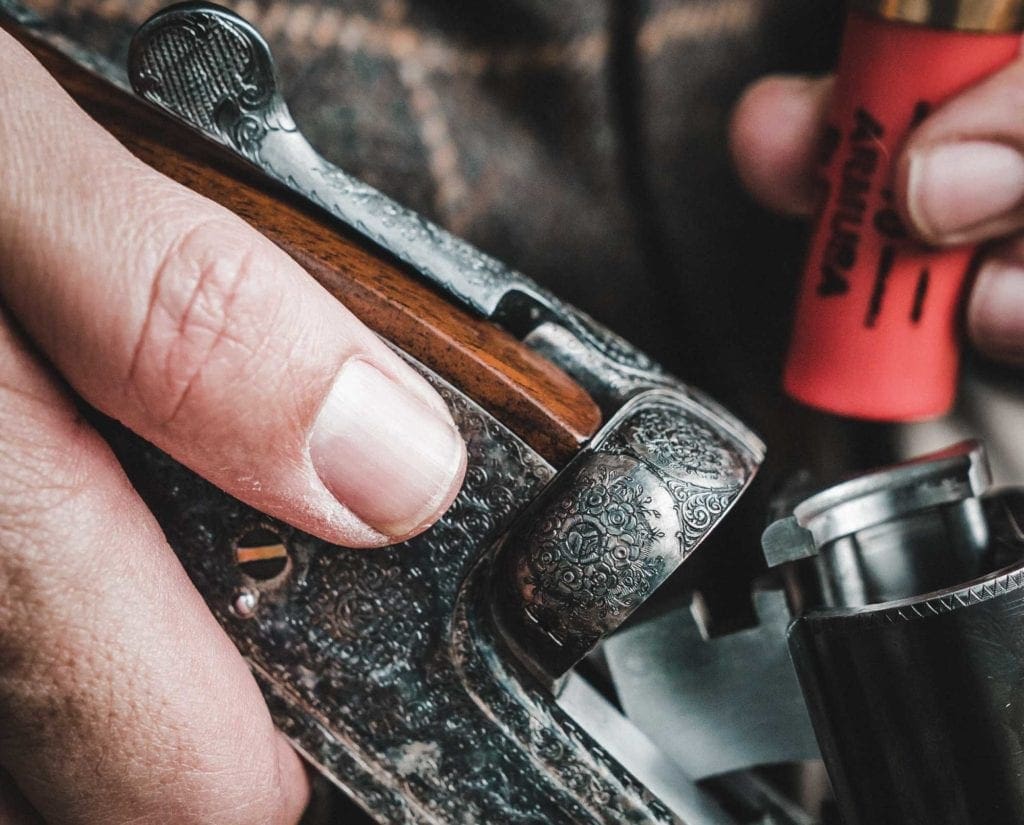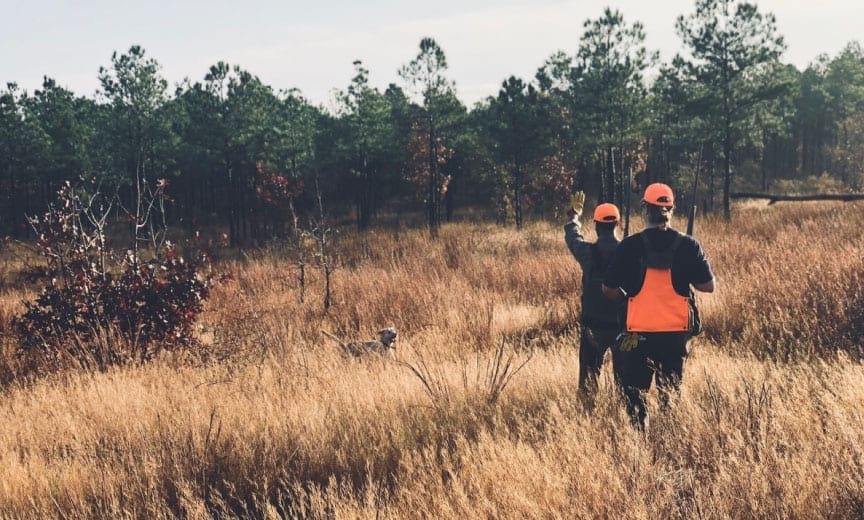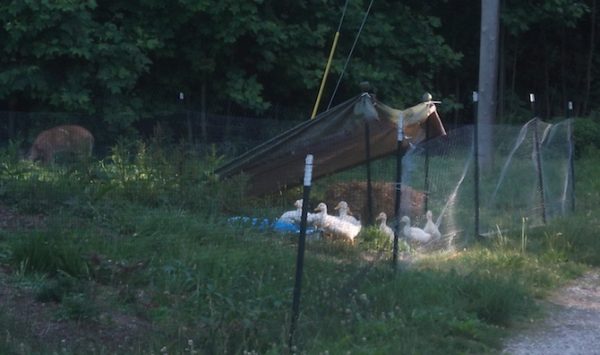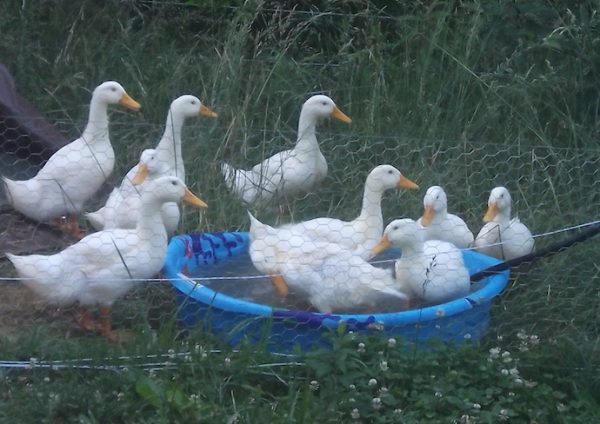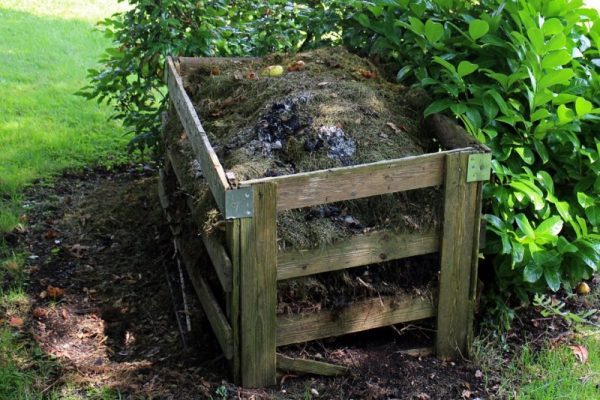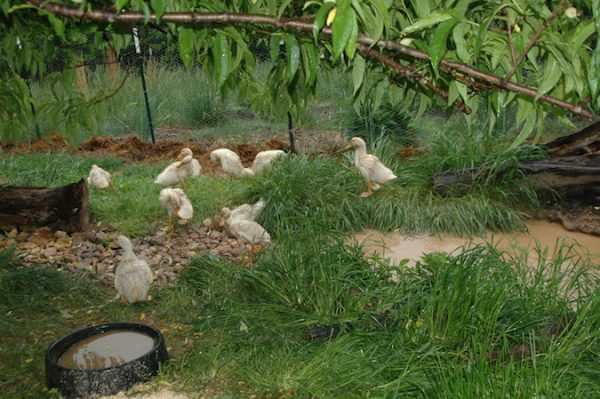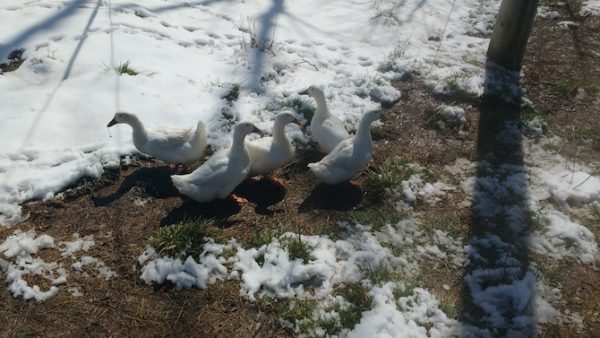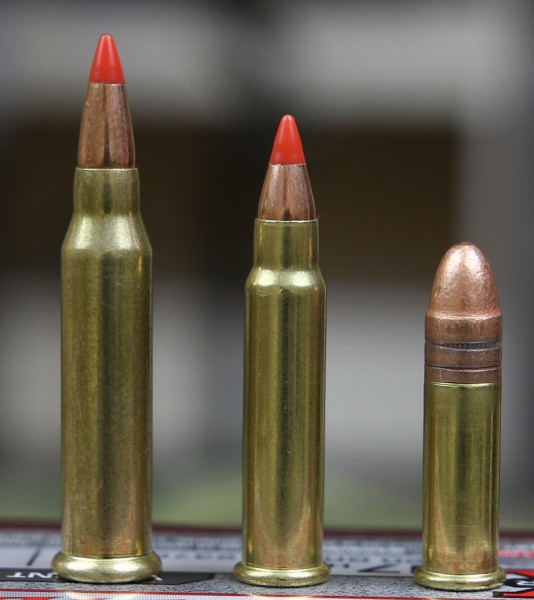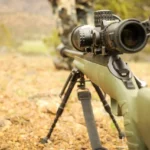Today I’m going to show you the best light for coyote hunting on the market today.
In fact:
I’ve hand-tested over 10 hunting lights alone for this review.
The best part?
I’ve sorted them by use. So whether you’re on a budget or looking for the most premium light, you’ll find it here.
Let’s get started!
Table of Contents
The 4 Best Light for Coyote Hunting
If you’re pressed on time, here’s a quick list of the best coyote hunting lights:
- Orion M30C: Best Coyote Hunting Light
- Ulako Zoomable Green Light: Best for the Budget
- Wicked Lights W403IC RED: Best Red Coyote Light
- Predator Tactics Coyote Reaper: Best for Predator Hunting
1. Orion M30C: Best Coyote Hunting Light
The Orion M30C is one of the best lights for coyote hunting on the market today.
Orion is one brand that has never disappointed me, so I was very excited to try this light!
How did it measure up to their other products?
Let’s find out.
Build
The Orion M30C is available in either red or green light. It offers 100% pure light, with no filtering at all.
It’s constructed with aviation-grade aluminum and is scratch and impact-resistant. It’s very durable, waterproof, and heat/cold resistant.
The M30C is made with 3 Cree XP-E2 LED lights, with three different brightness levels including 700 lumens, 400 lumens, and 75 lumens.
This is the brightest hunting light I’ve ever used. I’ve had many good experiences using Orion’s hunting gear, and this light was no different. It’s bright, clear in any environment, and easily portable.
To set the brightness, you turn the bezel at the top of the light. It’s a bit awkward to reach up and turn at first, but it’s easy to get used to and remembers your last brightness setting, even after you turn it off and back on again.
If you purchase the whole light kit, it comes with an AC and car power adapter, two high-quality batteries, and all the mounting gear you could need.
The brightness level you use determines how long you can expect the battery to last. At 75 lumens (the lowest brightness setting), it’ll last 22 hours. At 400 lumens, expect 4.5 hours of use. And at the highest setting of 700 lumens, it’ll last 1.8 hours.
The batteries are rechargeable up to 500 times, and since it comes with a car charger, it’s easy to charge no matter where you are. Plus, you don’t have to worry about overcharging, because it’ll automatically stop once the battery is full.
Use
Orion claims you can see up to 377 yards with this light, but I’ve seen the reflection of eyes from 500+ yards away!
I’d say it takes until you’re around 200 yards away before you can get a good shot, which is still incredibly far.
Coyotes never notice this light. Even from 5 yards away, on the brightest setting, they don’t suspect a thing.
The M30C comes with a tactical mount and all the attachments you need to mount it on virtually any gun’s scope, rail, or barrel.
One of the only downsides of this light is that the beam is not adjustable. It’s not a huge problem, just something that takes a little getting used to.
On some guns, the head may be a bit too large for the barrel connection piece. Again, not a huge issue, it might just rub against the barrel.
Size
This light is relatively small and compact.
The head is 2.5” in diameter, and the tail is 1”. Overall, it’s 6” long.
It’s also pretty lightweight, weighing only 7.6 oz. This is ideal, as it won’t add a lot of weight to your gun.
Price
You can choose to purchase the entire kit, including two batteries; the chargers; and the mounts, or you can purchase just the light.
The kit is available for around $170, while the light itself goes for about $120. In my opinion, it’s worth the extra $50 for the whole kit!
This is a light that’s absolutely worth the money you’ll spend. It’s guaranteed to be one of the best varmint hunting lights you’ll ever use.
Is the Orion M30C Worth it?
If you’re a seasoned coyote hunter, you know that lights are an indispensable part of any hunting trip.
Like turkey hunters need turkey calls, coyote hunters need coyote lights.
Coyotes are nocturnal animals, so you need the right equipment to be able to see through the pitch-black of night.
If you’re a newbie coyote hunter looking for the perfect accessories, the Orion M30C is the best, brightest light I’ve ever owned. It makes coyote hunting completely effortless.
2. Ulako Zoomable Green Light: Best for the Budget
If you’re looking for an affordable hunting light, look no further than the Ulako Zoomable Green Light.
Every nighttime hunter needs a light, and green lights are great because you can see your game, but your game can’t see you.
Many top hunting lights retail for $100+, but the Ulako will run you less than $30!
Does the company sacrifice quality in their pursuit of an affordable green light?
Let’s find out.
Build
The Ulako Green Light is made with a convex lens, powered by an included rechargeable battery. In a pinch, it’ll also run on 3 AAA batteries.
It’s made of very durable aluminum alloy, and it’s both waterproof and shockproof. I’ve had mine for over a year, hunted in just about every environmental condition you can imagine (sometimes multiple times per week!), and never had a single issue with it.
The Ulako also features dual switches. The tactical on/off switch is located on the tail cap, and the toggle pressure, momentary on-switch is located near the pressure pad. The dual switches give the user versatility and offer easy operation.
Overall, it’s a very simple yet rugged green light. The bright green light gives you long-distance visibility without alerting game to your presence.
Use
Ulako claims this light can extend to a maximum distance of 300 meters. In my experience, this seems to be true. However, you get the best visibility up to about 150 meters.
It projects a crisp, bright, and steady beam at long and short distances. Visibility is great, even in fog and rain. You can easily get a clean shot at any nocturnal pests, big or small, and they won’t be spooked by the green light.
One great thing about this light is that the zoom is adjustable. With the zoom fully extended, you get a small, concentrated, square-shaped beam. When you slide the focus inward, it changes to a less concentrated, medium to large, round beam.
The zoom is smooth, precise, and easy to adjust.
The battery is specifically designed for high-powered hunting flashlights, and you can expect a run time of 4+ hours on a full charge. The charging indicator light changes from red to green once the battery is fully charged, so there’s no need to worry about over or undercharging.
The Ulako fits tubes sized 25-30mm and mounts/unmounts easily.
Size
At just 14.4 oz, this is a relatively lightweight light that’ll fit nicely on any gun without weighing it down.
It’s 5.3” long (6’3” when fully extended) and 1.4” wide.
Price
The entire Zoomable Green Light kit is available for just $25.95.
This kit includes the light, quick release mount, Picatinny mount, pressure switch, rechargeable battery, and charger.
The rechargeable battery is especially useful, especially if you regularly hunt at night. It’ll save you countless pennies on replacement battery after replacement battery.
You may be wary of this light because its price is almost too good to be true! However, you can be assured that Ulako provides great quality at an even better price.
Is the Ulako Zoomable Green Light Worth it?
The Ulako Zoomable Green Light is the best option for the money by far.
Ulako offers a very dependable light that lets you get the best shot in the worst conditions.
It’s great for newbie nighttime hunters, as it functions simply and is very easy to operate.
If you’re a hunter on a budget searching for predator hunting lights reviews online, you might be discouraged by the high price of a lot of the top options. However, this is a fantastic light that won’t break the bank.
I would recommend it to any nighttime hunter who needs a good, affordable green light.
3. Wicked Lights W403IC RED: Best Red Coyote Light
The Wicked Lights W403IC RED is one of the best red coyote hunting lights available.
It’s purpose-built, durably engineered, and incredibly bright.
How does the W403IC measure up to competitors?
Let’s find out!
Build
The W403IC is precision-made with T6 aircraft-grade aluminum, with type III hard anodization. The entire assembly is produced by a certified LED manufacturer, ensuring consistent color and quality.
It comes with the Intensity Control Rheostat tail cap, which doubles as a push on/off switch. This allows you to set the light intensity level before you even turn the light on, and gives you infinite control of the brightness in order to spook fewer animals.
The zoom focus uses Wicked Lights’ Scan & Kill technology. While many other lights have a series of grooves, forcing the user to turn the knob numerous times to change the focus from flood to zoom, the W403IC has a single, deep groove for quick adjustments.
It features a built-in halo shield, eliminating any possibility of light spills, and has a taller lens than other similar lights for greater magnification.
The fully adjustable mounting hardware and Picatinny scope mount fits 1” and 30mm tubes. The light is o-ring sealed for water resistance, and it’s operable in temperatures ranging from -30 – 120 degrees Fahrenheit.
Use
Wicked Lights claims you can get 400 yards of visibility with this light. From what I’ve seen, this seems to be accurate! I’ve even seen eyes reflecting from 500+ yards away. You can expect to get a good shot from about 300 yards.
This light is very bright, durable, and operates as advertised. My battery lasts an average of 2.5 hours on a full charge, but this depends on the level of intensity you choose to use.
The Intensity Control tail cap is one of the best features of this light. You can set it low at first, then gradually brighten it as you need. This helps condition the animal to the light, as they won’t notice a low light that gradually gets brighter as much as a sudden bright light!
You adjust the zoom focus with a bezel, which allows you to easily and quickly switch from spot to flood with one simple twist.
Another great feature is the two-piece, adjustable mount design. You can quickly attach the light to your gun and zero in on your target.
Size
At the scope mount, the body diameter is 1”. Overall, the light is 7.28” long when not extended, and 7.72” when fully extended.
With the battery installed, it’s a relatively lightweight 15.6 oz.
Price
The entire W403IC kit MSRPs for $189.95.
This includes the light, 2-position battery charger with AC/DC adapters, 2 Lithium-ion batteries, the adjustable windage and elevation mount kit, and a plastic case.
For added peace of mind, this price includes a three-year limited warranty on the light itself and a one-year limited warranty on the accessories.
Is the Wicked Lights W403IC Worth it?
The Wicked Lights W403IC RED light is one of the brightest, best hunting lights on the market. It’s a must-have for anyone who regularly goes hunting at night.
Specifically designed to target coyotes; hogs; foxes; and even smaller game, including raccoons, this light will not let you down.
4. Predator Tactics Coyote Reaper: Best for Predator Hunting
The Predator Tactics Coyote Reaper XXL is the best predator hunting light of its kind.
The beam throw is unmatched and the adjustable focus gives you a clear picture, no matter how zoomed in you are!
How does it compare to similar lights?
Let’s find out!
Build
The Coyote Reaper is made with aluminum alloy and comes in a sleek, matte black finish. It’s waterproof and functional in temperatures down to -20 degrees Fahrenheit, so you can use it in a variety of environmental conditions.
It runs on a single rechargeable battery, but Predator Tactics also sells a battery extension tube that holds two batteries for a longer runtime. The battery extension tube does add a little weight, so keep that in mind if you’re considering adding one.
For added concealment, the Coyote Reaper includes a rubber halo shield.
One downside of this light is that the included universal mount is a bit difficult to adjust. I’d recommend considering a Predator Tactics windage elevation adjustable rail mount, which is easy to install and lets you aim much more easily.
Overall, the Coyote Reaper is a solid choice. Predator Tactics designs and manufactures high-quality hunting gear, and this light is no exception.
Use
Predator Tactics claims that the Coyote Reaper gives up to 700 yards of beam throw. Speaking from personal experience, this light seems to work precisely as advertised.
I haven’t tried using it from exactly 700 yards yet, but from 500+ yards, you can easily see and identify different animals in pitch-black conditions. The picture is very clear, regardless of the zoom settings.
The Coyote Reaper comes with an adjustable focus, good for varying range. The light quality is great, and it’s bright enough to zoom in without any pixelation or graininess.
Controlling the focus is a bit difficult to understand at first, so it’s best to become familiar with the controls before using it for any serious hunting.
The intensity control dial on the tail cap doubles as a remote on/off switch and can be easily and silently controlled without ever moving your hands from a shooting position.
However, it’s also easy to bump the switch and turn the light on accidentally – and you won’t notice, since it’s in IR, until you go to turn it on and see you have a dead battery!
To prevent this, I always make sure to just loosen the tail cap one extra turn.
The average battery runtime can vary greatly based on the brightness you use. In fact, I’ve hunted two nights in a row on one battery charge before!
Overall, I’d say the average total runtime is around 4 hours.
Size
The Coyote Reaper is 8.5” long.
It’s relatively lightweight, weighing around 17 oz, so you don’t have to worry about it weighing you down while you’re running through the woods!
Price
The entire XXL Rifle kit sells for $189.95. It includes green and red LED lights, a universal scope mount to attach it to a rifle scope or Picatinny rail, a rechargeable Lithium-ion battery, a charger, and a plastic carry case.
It’s not a cheap light, but it’s a pretty great value for one of the best predator hunting lights.
Even better, this price includes a lifetime light shell warranty; two-year LED bulb module and tail cap circuitry warranty; one-year remote switch, mount, and charger warranty; and a 30-day battery warranty!
Is the Coyote Reaper Worth it?
The Predator Tactics Coyote Reaper XXL is one of the best performing lights of its kind.
It’s ideal for nighttime predator, hog, and coyote hunting, helping you see better for more positive target acquisition.
I would 100% recommend this light to any nighttime hunter.
Now It’s Your Turn
I hope you enjoyed my best light for coyote hunting guide.
So as a recap:
If you’re looking for the best coyote hunting light, get the Orion M30C.
If you’re on a budget, I’d recommend getting the Ulako Zoomable Green Light. It’s affordable and dependable.
The Wicked Lights W403IC RED is the best red coyote light. It is durable and incredibly bright.
Lastly, if you’re looking for the best for predator hunting, then the Predator Tactics Coyote Reaper is what you are looking for.
Now I want to turn it over to you:
Which hunting light will you pick?
Let me know by leaving a quick comment








![Air gun 101: The differences between .177 & .22 – Which jobs they do best ? [Infographic]](https://airgunmaniac.b-cdn.net/wp-content/uploads/2024/11/1773-218x150.jpeg)
























































